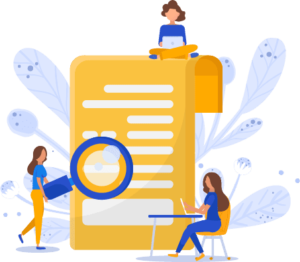
Big 5 Personality Test
Instructions for the test
The word that best describes you, mark it as 4 and the word that describes you the least mark it as 1. You need to rate these words between 4 and 1.
"*" indicates required fields

What is Big 5 Personality Test?
The Big Five Personality Test, also known as the Five-Factor Model, is a widely used psychological framework that assesses and categorizes an individual’s personality based on five key traits: Openness, Conscientiousness, Extraversion, Agreeableness, and Neuroticism (often referred to as OCEAN). Each trait represents a spectrum of characteristics, and individuals are rated on a scale for each one. This test provides insights into an individual’s unique personality profile, helping psychologists and researchers understand behavior, preferences, and potential outcomes in areas such as work, relationships, and mental health.
Who can benefit from this Big 5 Personality Test?
The Big Five Personality Test can benefit a wide range of individuals across various contexts. It is valuable for individuals seeking self-awareness and personal growth, as it provides insights into their personality traits, helping them understand their strengths and weaknesses. Employers can use it in the hiring process to assess job applicants’ compatibility with a role’s requirements. Therapists and counselors can use it to tailor treatment plans and improve communication with clients. Additionally, educators can better understand their students’ learning styles, and researchers can utilize it to study human behavior and relationships. Overall, the Big Five Personality Test is a versatile tool with applications in personal, professional, and academic domains.


Big 5 Personality Test Accuracy
The accuracy of the Big Five Personality Test is generally considered to be reasonably reliable for assessing individual personality traits. It provides a valuable framework for understanding personality variations. However, its accuracy may vary depending on factors like the quality of the assessment tool and the honesty of the respondent. While it offers useful insights into traits like extraversion, agreeableness, conscientiousness, neuroticism, and openness, it should be interpreted as a broad overview rather than a definitive measure. Other factors, such as situational context and personal growth, can also influence one’s behavior and may not be fully captured by the test.
Types of Assessment to Measure Big 5 Personality Test
Self-Report Questionnaires:
These are the most common and widely used methods for assessing the Big Five traits. Respondents answer a series of questions about their own behaviors, thoughts, and feelings, and their responses are used to calculate scores on each of the five dimensions.
Observer Ratings:
Instead of self-reporting, individuals can be rated by others who know them well, such as friends, family members, or colleagues. Observer ratings can provide a more objective assessment of a person’s personality traits.
Behavioral Observations:
This assessment method involves observing an individual’s behavior in various situations to infer their personality traits. For example, researchers might observe how a person interacts with others, their level of punctuality, or their risk-taking behavior.
Projective Tests:
These tests present ambiguous stimuli (such as pictures or words) to respondents and ask them to provide interpretations or responses. The responses are then analyzed to assess personality traits.
Interviews:
Structured or semi-structured interviews can be used to assess the Big Five traits by asking specific questions related to each dimension. Trained interviewers evaluate responses to determine personality traits.
Behavioral Assessments:
In some cases, individuals may be asked to participate in role-playing exercises, group activities, or simulations that can reveal their personality traits through their actions and interactions.
Handling Big 5 Personality
Handling the Big Five Personality traits, also known as the Five Factor Model (FFM), is important in various aspects of life, including personal development, relationships, and professional settings. The Big Five Personality traits include Openness, Conscientiousness, Extraversion, Agreeableness, and Neuroticism (often abbreviated as OCEAN or CANOE). Here are some tips on how to handle and work with these personality traits:
- Self-awareness: Understanding your own Big Five Personality traits is the first step. Self-assessment tools and personality tests can be useful for this purpose. Once you have a clearer picture of your traits, you can leverage them effectively.
- Acceptance: Accept that everyone has a unique combination of these traits, and there is no “ideal” personality. Embrace your own traits and recognize that others have their own traits as well.
- Communication: In personal and professional relationships, effective communication is key. Understanding the personality traits of others can help you tailor your communication style to be more effective. For example, someone high in Extraversion may appreciate more social interaction, while someone high in Conscientiousness may prefer structured and organized communication.
- Teamwork: In a team setting, diversity in personality traits can be a strength. Different traits can contribute to different aspects of a project. Encourage open discussions and collaboration, and recognize the strengths of each team member based on their personality traits.
- Conflict resolution: Conflict is a natural part of any relationship or workplace. Knowing the Big Five Personality traits of those involved in a conflict can help you understand their perspective and approach to the situation. This understanding can be a foundation for more constructive conflict resolution.
- Leadership: Effective leaders are often those who can adapt their leadership style to the needs and personalities of their team members. Being aware of your team members’ Big Five Personality traits can help you lead more effectively by tailoring your leadership style to their preferences.
- Personal development: If you want to improve specific aspects of your personality, such as becoming more conscientious or less neurotic, there are strategies and techniques you can use. For instance, mindfulness meditation can help reduce neuroticism, while setting clear goals and priorities can enhance conscientiousness.
- Selection and hiring: In a professional context, understanding the Big Five Personality traits can be valuable for selecting and hiring employees. Consider the traits that are most important for a particular role and use personality assessments as part of the hiring process.
- Adaptation: Recognize that personality traits can change over time, although they tend to be relatively stable. Life experiences, personal growth, and intentional efforts can influence your personality. If you wish to adapt certain traits, it’s possible with dedicated effort and self-awareness.
- Respect and empathy: Above all, treat people with respect and empathy, regardless of their personality traits. Avoid making assumptions or judgments based solely on someone’s personality, and be open to understanding their unique perspective and experiences.
In summary, handling the Big Five Personality traits involves self-awareness, effective communication, adaptability, and a respectful and empathetic approach to interacting with others. By understanding and working with these traits, you can improve relationships, enhance teamwork, and navigate various aspects of life more successfully.